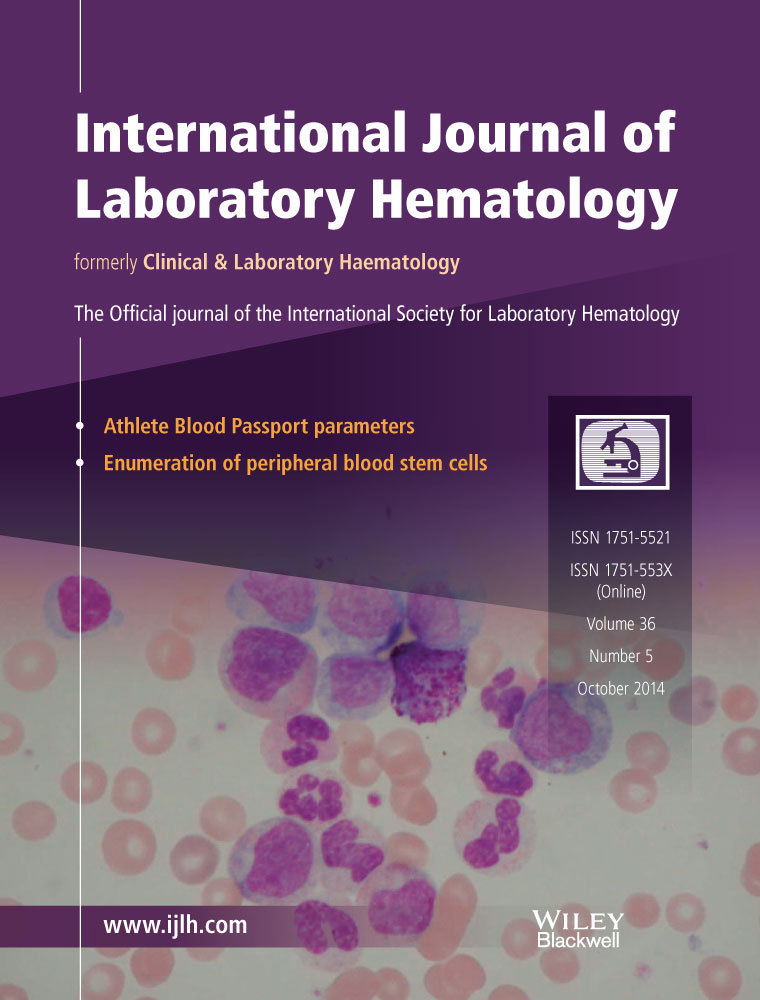FVIII and FIX inhibitors in people living with hemophilia in Cameroon, Africa: a preliminary study
Summary
Introduction
Hemophilia is a reality in Cameroon were more than 100 patients are registered and followed-up in the Yaoundé Hemophilia treatment center.
Aim
We conducted a cross sectional study in patient living with hemophilia in that setting in order to determine the frequency of Factor VIII and IX specific inhibitors and the factors associated their presence.
Methods
From May to December 2012, venous blood samples of hemophiliac patients undergoing replacement therapy were collected in tubes containing 0.109 m (3.2%) trisodium citrate. Inhibitors were screened by APTT based method using 50 : 50 patients' plasma mixed with normal plasma incubated together for 2 h at 37 °C. Quantitative assay was carried out to measure Bethesda units (BU) with the Bethesda Nijmegen Assay. Samples were labeled as low titer inhibitor when <5 BU were detected.
Results
A total of 42 patients were tested among which four had haemophilia B while 38 had hemophilia A. Eight patients (19%) were found to have positive Bethesda test. The mean age of patients with inhibitors was 9.2 ± 6 years (2–18). Two of them were high responders (25%). the frequency of inhibitors was higher in severe hemophiliac patients.
Conclusion
The frequency of inhibitors in hemophiliac patient undergoing replacement therapy is high in Cameroon. Severity of disease was found to be the main contributing factor in patients who developed inhibitors.




